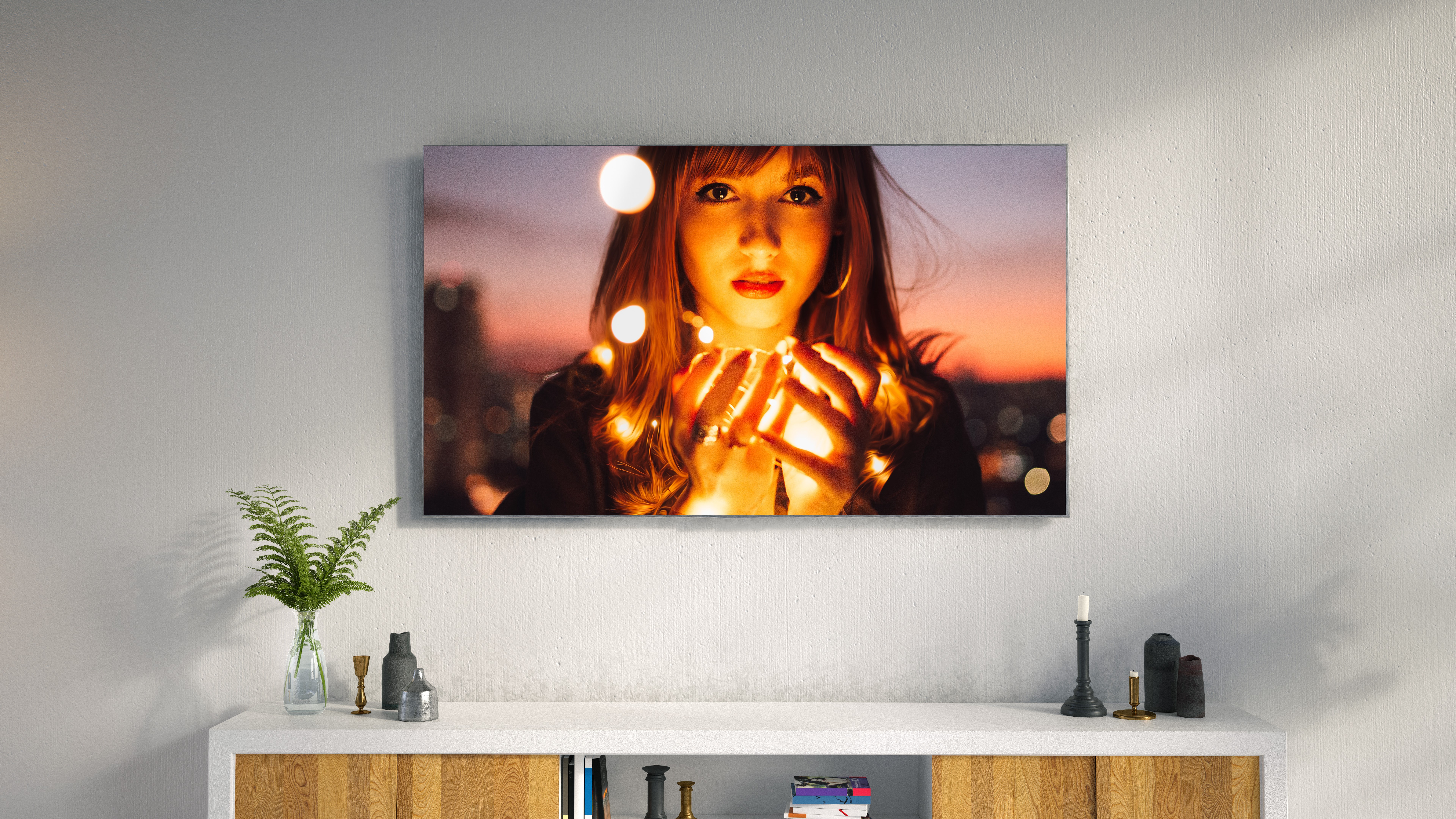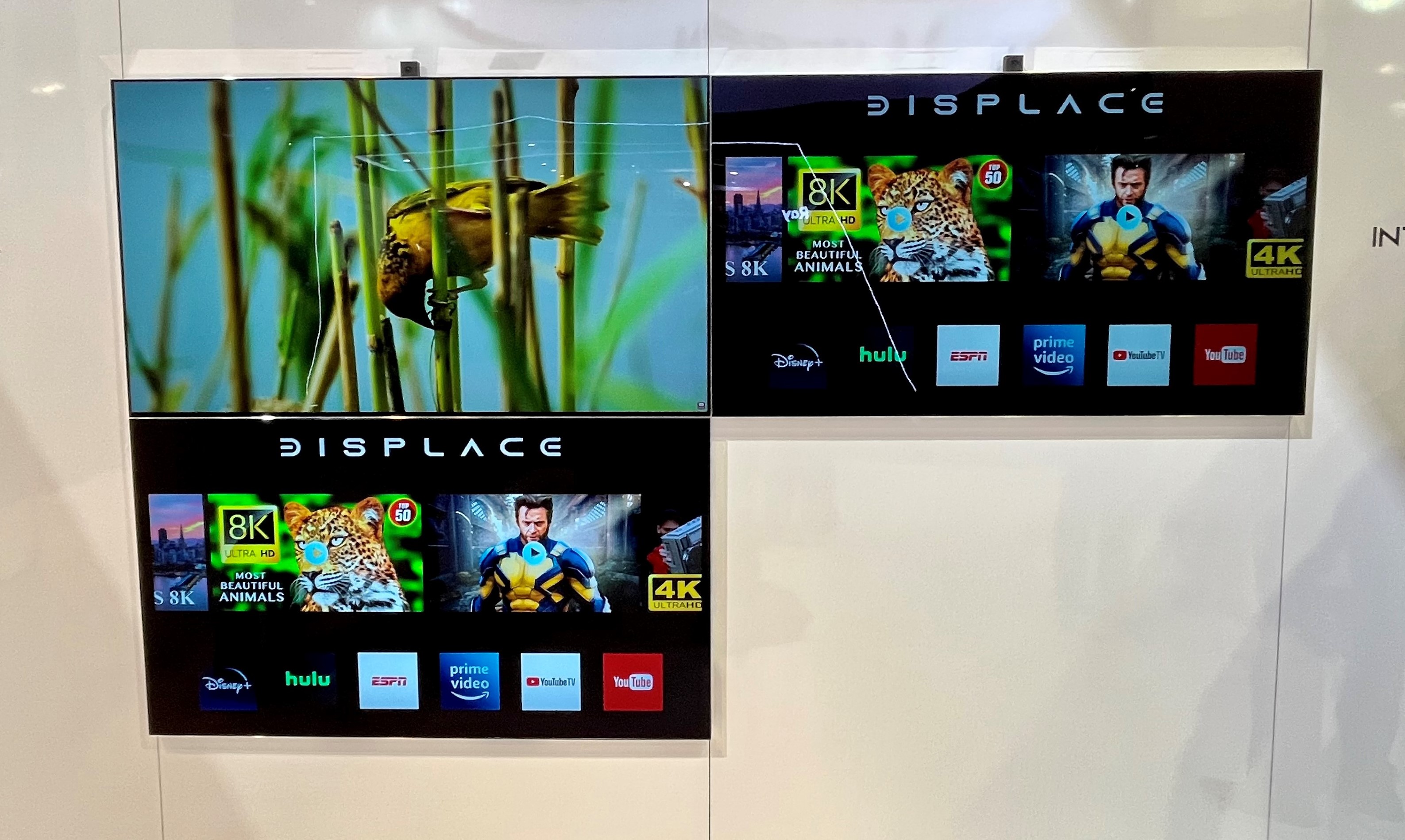Displace launches a new 27-inch gesture controlled, wireless TV you can stick to any surface – is this the ultimate kitchen TV?
This TV will make you feel like you’re in Blade Runner

The innovative TV startup Displace plans to launch two new models in its range of wireless TVs at the consumer electronics shows (CES) in January 2024 . The TVs are called the Displace Flex and Displace Mini, and mark an expansion of the company’s first fully wireless 55-inch 4K TV that we saw earlier this year.
The 55-inch Flex will be priced at $5,999, while the 27-inch Mini is set to cost half that at $2,499. But you won’t be able to buy them straight away. Shipping dates for the Flex and Mini are tentatively listed as “by the end of 2024”.
Like the original Displace TV, the Flex has a similar spec list, including its extremely lightweight and portable wireless capabilities, and month-long battery life. What’s new though is that it comes equipped with an NFC reader and thermal cameras. The NFC readers mean you can pause the video you are watching to buy items such as clothing, electronics and food relevant to what you’re watching. Once you have selected your items, all you have to do is put your phone to the TV itself or pay via the Displace app and you’re done. Meanwhile, the thermal cameras can generate body heat maps that can be used with apps like telehealth to assess your health.

These new features are also in the Displace Mini, a 27-inch version of the original Displace screen. It weighs a super light 12lb, meaning it can be installed all around the home in places such as the refrigerator, kitchen countertops, bathrooms and more, to give you that interactive smart home feel. The Displace Mini can also be combined with other Minis to make a larger screen, again much like the original Displace TV, meaning those with businesses can combine them to make a larger display. Like the Flex, the Mini also has an average lifespan of a month based on six hours viewing a day. It can also be charged wirelessly via the Displace Stand, but this is sold separately.
What’s unique about these TVs is that they’re easy to hang on the wall, thanks to Displace’s active loop vacuum technology, which is what allows it to stick to the wall without needing a wall mount. Displace claims it’s one of the safest TVs to hang on the wall due to its self-lowering gear system.

The TV of the future or a gimmick?
The Displace TV range offers a lot of futuristic features that sci-fi fans have dreamed of. The ability to control the display with hand gestures conjures images of Tom Cruise in Minority Report. Meanwhile, the features that make it easy to seamlessly interact with the TVs for shopping and doctor's appointments also make me think of Blade Runner and The Fifth Element.
While all this sounds fantastic, $2,499 for the 27-inch Mini and $5,499 for the 55-inch Flex is a lot of money. You can get the best TVs on the market for that price, including some of the best OLED TVs in a large size. While the Flex and the Mini may sound like the TVs of the future, they will be for those who can stretch their budget that far.
Get daily insight, inspiration and deals in your inbox
Sign up for breaking news, reviews, opinion, top tech deals, and more.
Where the Displace range does sound useful is for businesses looking to create large displays as the TVs can be combined together. You can combine the 55-inch TVs into one massive 220-inch screen with 16K resolution! This is admittedly cheaper than other large screens such as LG’s 118-inch MicroLED screen, which retails for $237,000, and the 55-inch screen even uses OLED technology.
So while these may not be accessible to everyone, they are definitely useful solutions, particularly the 27-inch Mini for its versatility as a smart-home style solution and the 55-inch Flex for business displays. But if you’re looking for a more conventional TV, you’re probably better off getting one of the best 4K TVs and shopping the good ol’ fashioned way.
You might also like...

James is the TV Hardware Staff Writer at TechRadar. Before joining the team, he worked at a major UK based AV retailer selling TV and audio equipment, where he was either telling customers the difference between OLED and QLED or being wowed by watching a PS5 run on the LG 65G2. When not writing about the latest TV tech, James can be found gaming, reading, watching rugby or coming up with another idea for a novel.